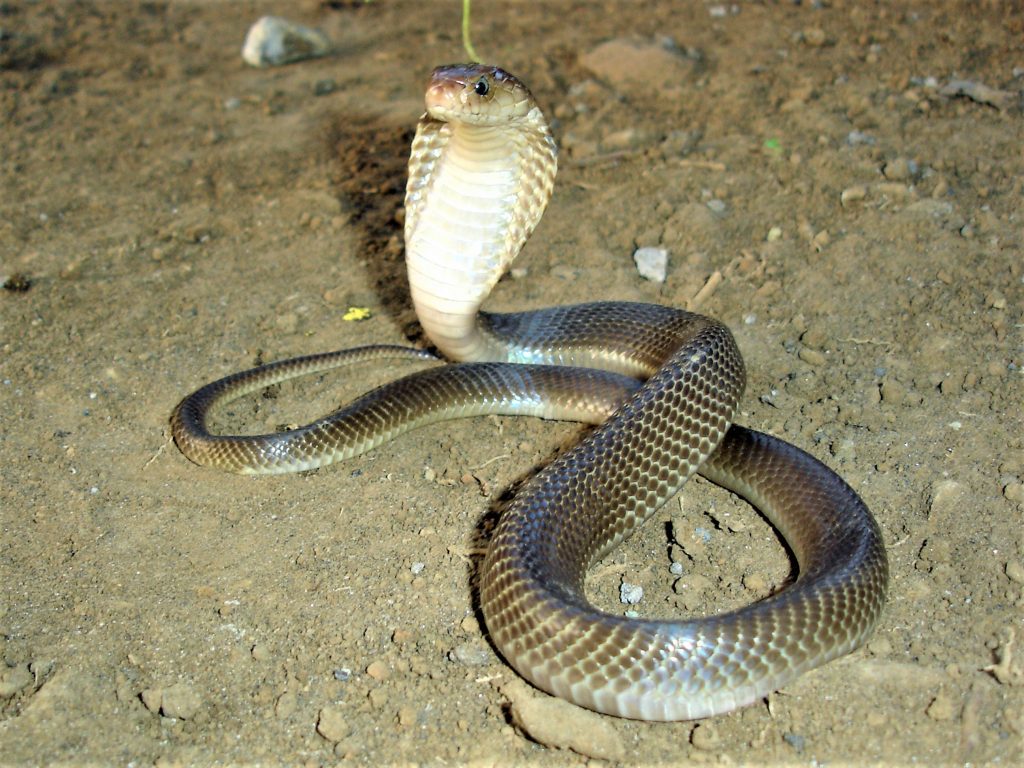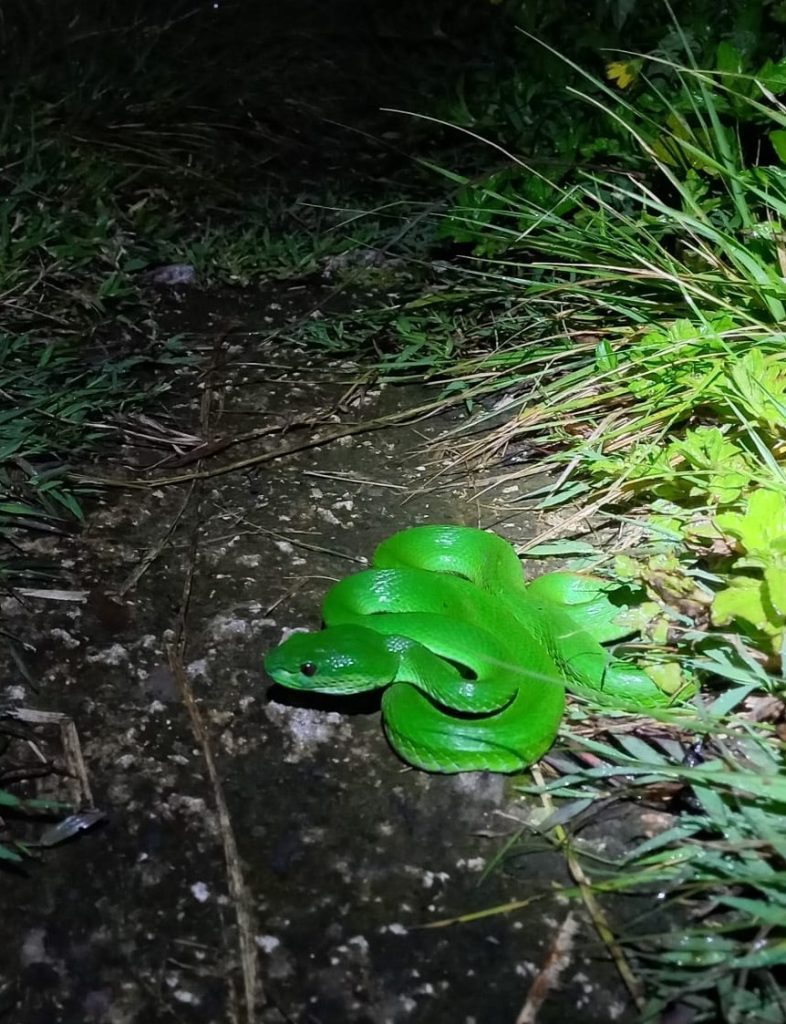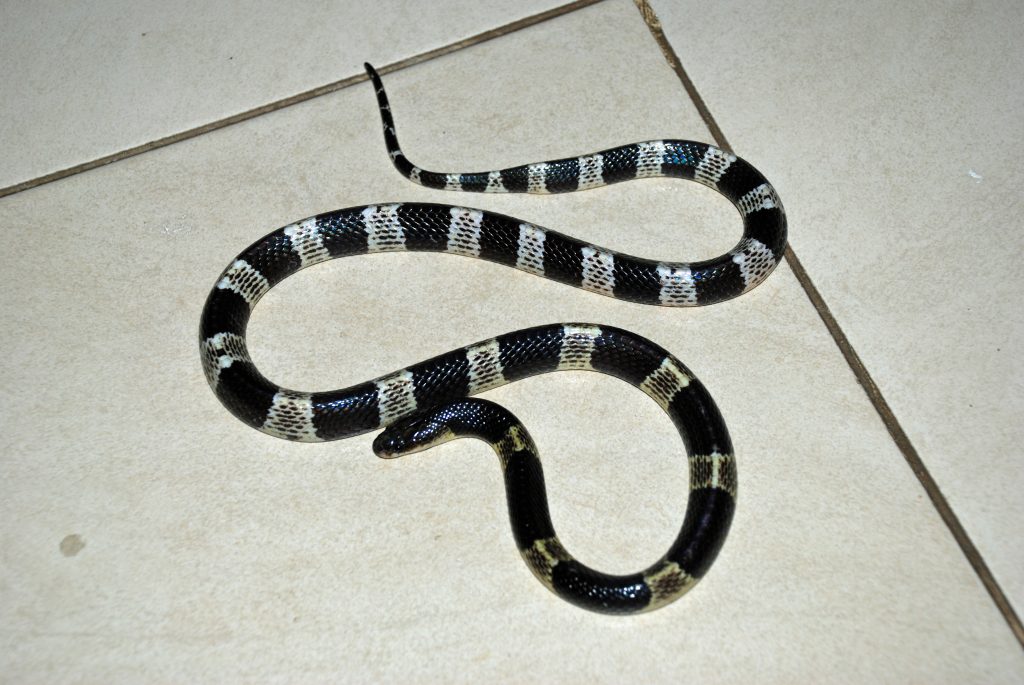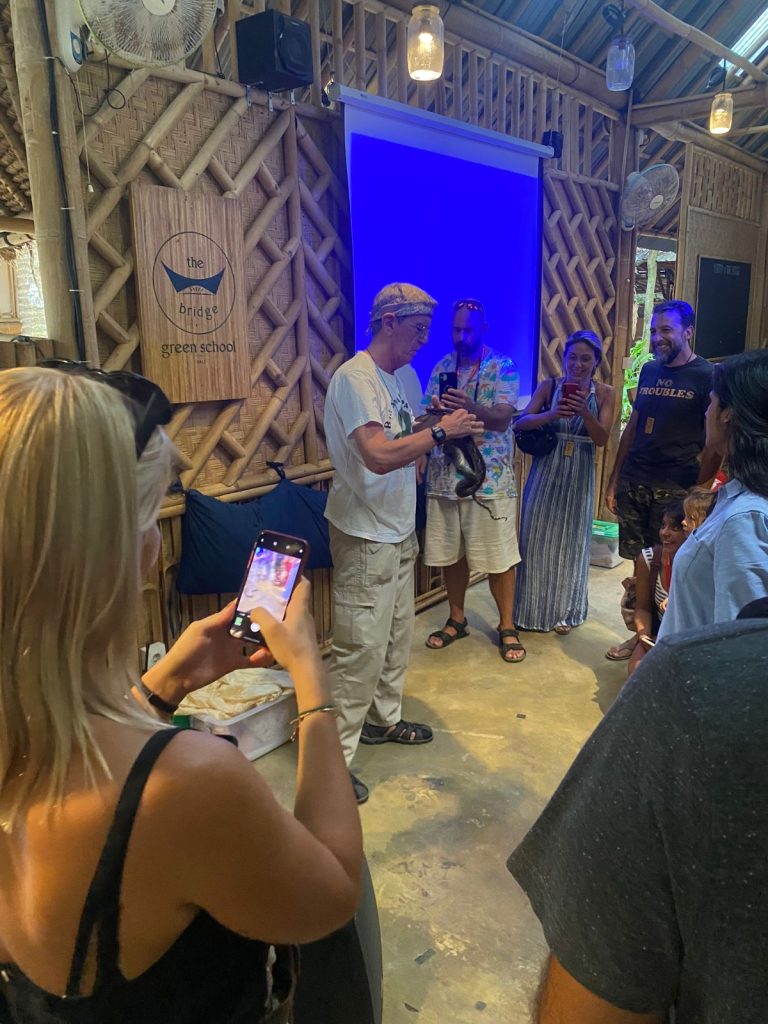In this intriguing interview we dive into the captivating world of Bali’s snake population! When clients approach me with queries about the snake situation in Bali, I couldn’t help but think, who better to provide an answer than Ron Lilley, renowned as the “Snake Man of Bali.”
In this captivating conversation with this experienced expat, we are privileged to hear from Ron, who possesses an extensive knowledge of Bali’s snakes. We sincerely appreciate Ron’s kind gesture of dedicating his time to share invaluable insights with us, despite his demanding schedule as you will discover below.
Can you tell us a little bit about yourself and where are you originally from?
I was born in Leeds, England. I have lived and worked in Indonesia for many years (since 1986), and have lived in Java, Sumatra, Flores, and Papua and am now living in Bali. My work has included time with various international and local NGOs, including WWF, TNC, FFI, CI, and MAC, and I now support a local conservation NGO LINI (Yayasan Alam Indonesia Lestari), as well as running Bali Snake Patrol. I have travelled extensively throughout the archipelago.
My first degree was a B.Sc. in Zoology, and then an MSc. in Conservation biology (thesis on Komodo dragons). My background also includes a certificate in Teaching English as a Foreign Language (TEFL), and a certificate in teaching English to Adults.
I was a founder member of the Indonesian Herpetological (reptiles and amphibians) society, and I continue my work that includes snake identification, snake rescues, snakeproofing and snakebite first aid advice to businesses, schools and the public, snake safety talks to businesses, academic institutions and private parties. I also have some tame snakes for use in photo shoots and film documentaries). Besides having my own Facebook page with photos of local snakes, I am also a moderator on the ‘Snakes of Bali’ Facebook page. My wife Gayatri, is an Indonesian marine biologist and conservationist who runs the local NGO LINI (Indonesian Nature foundation), which encourages community-based conservation.
When did you first arrive in Bali, what brought you here, and how long do plan to stay?
I visited Bali many times over the years that I have lived in Indonesia, but I moved to settle in Bali with my wife in 2003. Having only a UK state pension to live on, and no family in the UK, I intend to stay in Bali for the foreseeable future!
What motivated you to move to Bali, and how did you go about making the decision to do so?
After living on a number of other islands in Indonesia, and working for several international nature conservation NGOS here, I was offered a job with the Marine Aquarium Council, and moved to Bali with my wife and son to work on the marine aquarium trade, which is a huge business in Indonesia, but poorly monitored. Bali is a strategic central island from which it has been easier to visit other places in the Indonesian archipelago. Being a tourist island, Bali has many amenities and facilities that are not found in many other parts of the country. The culture is rich and diverse, the landscape is beautiful, and many people (especially those working in the tourism sector) are likely to speak English and other foreign languages.
Where in Bali do you currently reside, and what made you choose that location?
I currently live in a village east of Sukawati, and south east of Ubud. We chose the location because, after living in Sanur for 7 years (which was quiet, strategically located, and perfect for us, also being near to an International school, which our young son attended) we were obliged to move after the landlord suddenly tripled the rent! Using the last of our limited savings, my wife purchased land way from towns, but not building on rice fields or other agricultural use areas. Our LINI office is in Renon, south of Denpasar, and is also strategically located.
I have many people, especially families who have never been to Bali before and are concerned about snakes, so I thought you would be the BEST person to explain this further. You are the go-to person when it comes to snake proofing advice, education and retrieval.
I am also known as the “Snake Man of Bali’ and the snake whisperer”! Because I speak both English and Indonesian, and have many years of experience in the field, I find that many people trust my judgement when it comes to matters concerning snakes and other wildlife in Bali and beyond. I work closely with other local volunteers whom I consider to be competent snake catchers, and who may be able to respond more quickly to a request for help than I can because of their location.
What type of venomous and non-venomous snakes does Bali have? Where are they usually found, and how common are they?
There are nearly 50 different kinds of land snakes in Bali, although only 6 or 7 of them present a potential danger to humans or pets. The most common venomous snakes here are the island pit viper (which accounts for most bites because people step on it in the dark!), the spitting cobra, and the Malayan krait, which is Bali’s most venomous snake. There are also sea snakes along the coast. In practical terms, there are no “snake-free” areas in Bali. In spite of this, snake encounters are very rare (snakes generally want to avoid people!) and snakebites are even rarer. It is mostly poor local farmers, gardeners and fisher folk who are bitten. But it is important to remember that no snake here will bite anyone if it is left alone and not scared or hurt!

Spitting Cobra
What are the possible issues people need to be aware of and how best can they avoid them?
Snakes are active both day and night in Bali. Having lost so much of their wild habitat to development in the past few years, many snakes are finding their way into houses and gardens here they find everything they need – namely drinking water , food (mainly rats, frogs, fish and lizards, although big pythons will also hunt larger animals such as chickens and domestic pets) and places to shelter and hide. No snake here will chase, attack or bite anyone unless provoked, scared or hurt. All snakes are best left alone, and if necessary an experienced snake catcher can be called to safely remove them.
My advice to everyone is to stay alert, and understand that we humans are relatively recent arrivals living in areas occupied for thousands of years by snakes and other tropical wildlife. Use of a bright flashlight/torch whenever walking anywhere after dark, in order to see snakes ahead on the path ahead, and then avoiding them. Garden lights also help to keep at least some nocturnal snakes away, and allow people to see a snake if it does appear. It helps to keep homes and gardens very tidy, vegetation and lawns well-trimmed and move everything (including shoes and crash helmets) off the ground so that snakes have nowhere to hide under.

In a worst-case scenario involving a snake encounter, what actions can individuals take?
In short… STOP. No nearer than 2m. The snake cannot see you if you stay still. Watch where it goes. While watching, walk slowly away or around. A snake will not chase you! Do not run or you may fall over! Shout “snake! Ulnar! Lipi!” to alert others to the presence of a snake. Take photos if possible. From 2m away, you should be safe. Send photos to me or another snake identifier so we can assess the risk and know more about the snake’s likely behaviour, depending on type. If indoors, close the door to prevent escape, use damp towels or other to block gaps under doors. Call a competent snake catcher. If snake is identified as not dangerous, you can be guided through dealing with it safely yourself by a competent snake catcher. Full details from me.

Malayan Krait
If you find yourself being bitten by a snake, what measures should be taken?
In short – relax (easy to say!), try if possible to get a description or photos of the snake but do not take risks or waste time looking for it! Hopefully you have been proactive and know where the nearest medical centre is that can deal with a snakebite. Apply 2 splints to arm or leg to immobilise the bitten limb to stop it moving.
Do not suck, cut or apply a tourniquet! do not apply anything… no medicines or traditional cures> no need to wash the bite site. go straight to a medical centre, let people carry you if necessary. Bring any details of medical history< medications being taken.try to move the bitten limb as little as possible to slow the venom spread. in the medical centre, be prepared to pay cash upfront, and then to stay for 24 to 48 hours for observation. reassure the victim that if they remain calm without raising blood pressure, they will have time to be treated. survival rates are high and many bites carry little or no venom. more detailed info from me.
How can people try their best to snake-proof their homes if that is possible?
Deprived of their wild habitat, because of land clearance that is happening all over Bali, snakes and other wildlife are moving into urban and suburban areas, and particularly new houses because we provide them with everything they need- food, drinking water and shelter. Each situation is different. People who choose to live in in open houses with open jangly gardens next to rice fields and valleys m or in the middle of nowhere far from other houses and limited or no car access are at greater risk of encountering snakes than those living in the middle of town. Ponds with fish and frogs will also attract snakes. Each property is different, but several actions can be taken to reduce the chances of snakes getting in. These include closing all holes around the property, including gaps under and by the side of gates and doors, putting mesh on drains and pipes, and cutting back vegetation on walls that snakes might use to climb up and over.
Similarly, vegetation and particularly branches and climbing plants that touch windows and the roof should be cut back. All gaps under around doors and windows need to be closed so snakes, scorpions and other animals cannot squeeze under or through. Mosquito netting on all air vents in walls and doors will also keep animals out. These deterrents also apply to doors that lead to inner rooms. And most important, remove all items in the garden and house under which snakes can hide. Snake repellents (salt, sulphur and other chemicals, plants of various sorts) do not work, so snakeproofing is the better option! Contact me for my snakeproofing notes and if necessary a follow-up site visit can then also be arranged.
What is a day in a life of a snake catcher and educator like in Bali?
Starting early in the morning, my regular activities include answering requests for help (snake identification, snake rescues, snakeproofing help, snakebite first aid info) Usually I receive at least 5 or 6 requests for help every day, but these can reach 12 or even 15 messages during a 24 hour period. I try my best to outsource the rescues to other local volunteer snake catchers I know, but no one works for me, I have no staff, and I receive no regular funding for my efforts. I need to feed and clean my animals (snakes and some other creepy crawlies) and regularly have to buy more white rats and mice, (which has become a significant weekly expense, especially during and since COVID period!) I use these animals for my talks to schools, businesses and private functions, although most of the snakes I recue are released in safe places after making sure they are healthy. Driving my car to rescue snakes, give snakeproofing advice and snake safety talks can take up most of my day. I correspond with other snake catchers and snake experts, and try to read any of the latest scientific papers on snakes. I proofread and correct the English in scientific papers written by Indonesian scientists for publication, and am constantly being asked to provide interviews and information of magazines and online public help and info sites (including this one!). My tame and not-so-tame snakes are used for photo shoots and film documentaries. So as you can see, my days are full and my nights can be very short!

What exciting projects or initiatives are you working on?
I am helping Doctor Tri Maharani, Indonesia’s top snakebite expert, to develop materials for the Indonesian snakebite Initiative. She has just produced new guidelines and training for doctors that will significantly update and upgrade the snakebite management methods that have been tight here for many years. . I also try to identify snakes fem photos she sends me from all over Indonesia. There may also be the possibility of producing more antivenom for snakebites here in Bali and throughout Indonesia, although this is a complicated and very expensive initiative that needs full government support. This will hopefully help to save many lives here
A film company is making a documentary about me and my work and it should be ready for broadcasting towards the end of 2023. My snakes and I have also been filmed for the ‘baliwildlife.com’ website.
Besides giving snake safety talks in Bali, I have also been asked to also give talks in Java, Sumba, and Sumbawa, and am providing training for new snake catchers who want to learn about the safe way to catch snakes.

Is there anything else you would like to share about your experience living in Bali that we haven’t covered yet?
Although this is a tropical country with a number of animals that can bite and sting, it is important to keep things in perspective. Snakebites and animal stings are relatively rare, (especially compared to the risk of motorcycle and car accidents!) and can be avoided with a little care and awareness. In fact, the safest thing to do is to learn about the local snakes and other wildlife, and take simple precautions to avoid being bitten or stung, like always using a bright flashlight when walking anywhere at night.
Even if a bite does happen, it can be treated if the bitten person seeks medical attention quickly! With a little care and forward planning, snakebite can be avoided. Bali can be a wonderful place to live if we remain thoughtful and mindful! I enjoy my work very much and I will continue to try and serve the Bali community for as long as I am able! My main contact number is via Whatsapp (+62)(0)813 3849 6700, and I will try to help if I can!
For updated information and photos of local snakes, please follow Ron on Facebook or Instagram.





